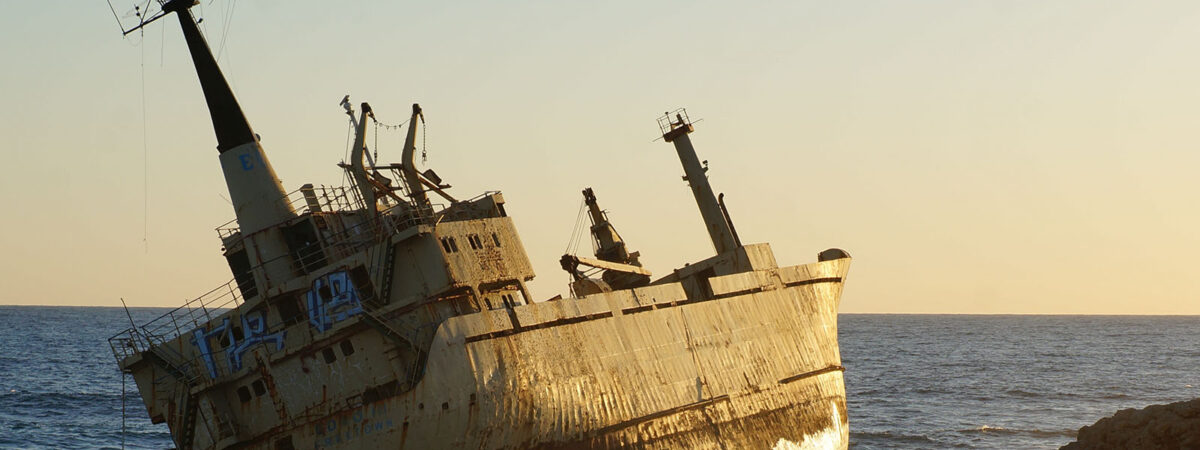The Paphos District in Cyprus is one of the most popular areas for visitors to this Mediterranean holiday destination. The district’s capital city, also called Paphos, has a beautiful harbour, ancient structures, old town market area, museums, wonderful food and wine, and lively nightlife.
Outside the city, the wider district presents travellers with mountain trails, valleys with vineyards and orchards, ancient villages, relaxing beaches, intriguing history, and sunny taverna patios to enjoy traditional meals with local wines. Local expert Richard Powell gives us a tour.
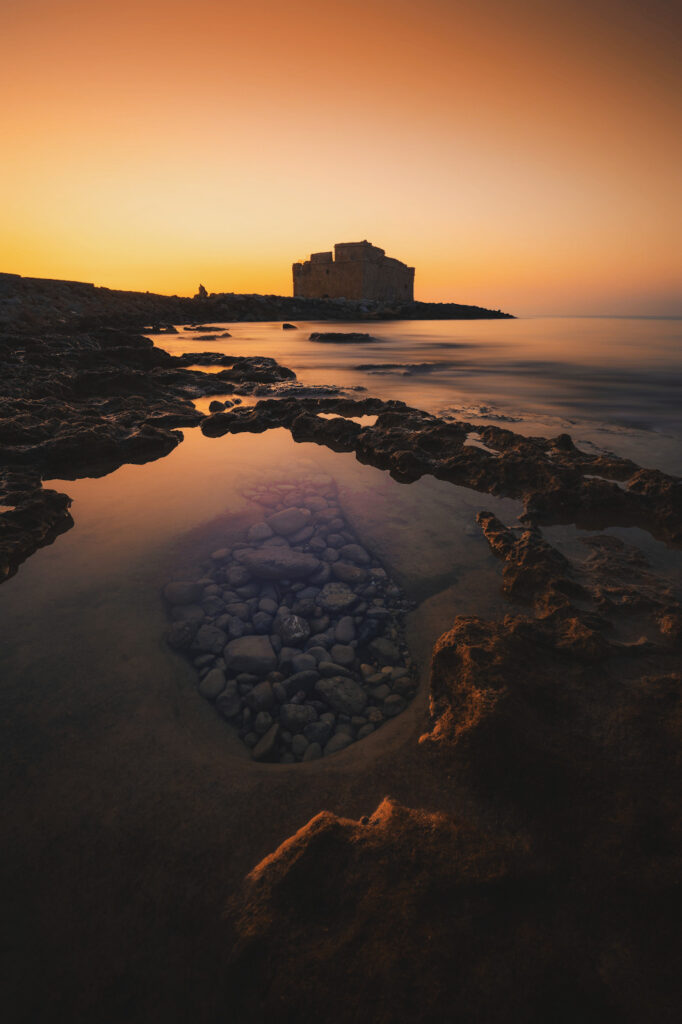
Upon Arrival
After a visitor arrives in my city, I always recommend going straight to the old harbour because this is the most memorable place in the city. On one side is the sparkling sea and lovely beaches, and along the other side of the seawall are restaurants, bars, hotels, and shops. Enjoy local food, a cold beer, a splash in the warm sea, boat tours, archaeological sites, or just people-watching while catching the sun’s rays. In the evening the taverns and nightclubs have great entertainment. Alternatively, visitors can take in one of the open-air music festivals in front of the 500-year-old fort.
I always tell first time visitors to learn a few words in Greek — “good morning,” “hello,” and “thank you.” It goes a long way with the locals, who will probably answer you in English. I also recommend getting out and visiting the old villages in the hills — the district is far more than just the city. I tell them to avoid the “tourist strip” and the big mall.
People from here know better than to be out in the mid-day sun. They prefer to be more laid back, enjoying a nap under an umbrella by the sea or the pool, or enjoying a drink in the lush gardens of the local taverns.
Paphos has many millennia of history with archaeological sites and museums everywhere. The best place to start your journey and get a good sense of this history is the Paphos Archaeological Park. Spread over a large area by the harbour, ruins of Roman villas and forums with beautiful mosaics are everywhere. Spread around the city are museums for bronze-age finds, the Byzantium era, the Ottoman empire, and everyday living. Whenever travelling in the hills, I keep my eye out for little museums in the ancient villages. Travellers can find displays dedicated to wine, cheese, lace, Orthodox icons, basket making, and monastic life.
For families with kids, the district is very much a beach place. Most of the beaches are blue-flagged, which means they reach the highest standards of the European Union. All the popular ones have excellent facilities. The clear water is warm most of the year, and the beaches are sandy with gentle slopes.
Food from the Heart
Among the food my district is most proud of is always fresh and healthy. Traditional Cyprus food is considered to be part of the healthy Mediterranean diet with fresh fruit, vegetables, and olive oil. One of the best local dishes is souvla, made from large pieces of chicken or pork on big skewers roasted slowly over a charcoal barbecue — so tender and delicious! This is served with a village salad and hand-cut chips. The best place in the district for this treat is at Viklari, also known as The Last Castle. The food, views, and atmosphere are worth the excursion.
When we get together with friends, it is usually around the pool for a barbecue where the iconic local beer KEO is evident in its bright yellow tins. For wine lovers, there are 52 award-winning wineries on Cyprus with some very unique grape varieties. The end of an evening meal is often finished off with a shot of zivania, a liqueur made from distilling local wines. Believed to be more than 500 years old, this liquid is like brandy or grappa. It has a real kick.
When I eat locally, I love visiting traditional restaurants, especially if they have a vine covered patio or garden. One of my favourites is Gianni’s in the village of Kathikas, where I have never been disappointed with the homemade Cypriot fare.
Beyond the local meals, I also enjoy Orino’s by the Sea, where you sit outdoors enjoying delicious international dishes and cocktails while watching the sunset behind the Edro III shipwreck. Another popular spot is Tweedies in the village of Kissonerga. There are only eight tables inside, but in the summer, the garden is beautifully lit.
The Paphos locals usually leave the harbour area to the tourists and dine in the many restaurants in the Old Town area up the hill.
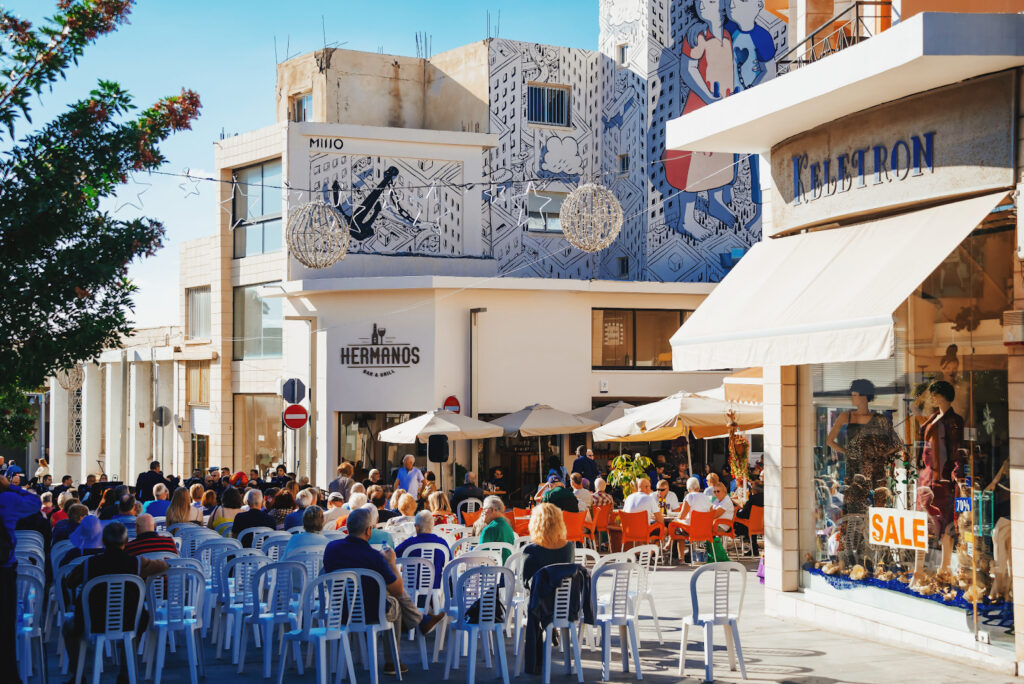

Shopping Locally
The Paphos District is known for its many crafters and artisans. Here you can buy beautiful handmade lace, copperware, leather products, fused glass, ceramics, woven textiles, and baskets. At the Paphos Old Town municipal market, we find everything from fresh produce to crafts to souvenir items, plus there are some great little coffee shops and restaurants. I can spend hours wandering around, looking at the artisans’ workshops and their unique handmade crafts.
Many of the villages have farmers’ markets on different days of the week. Every Sunday and Wednesday, car boot fans will love the Duck Pond, a big flea market with fresh produce, new and used items, and curiosities. I suggest avoiding the big shopping mall because most of the products are imported and can be purchased probably cheaper where you live.
Getting Deeper Into Paphos District
A great book to learn more about the backcountry of Cyprus was written about 25 years ago. It is called “Walk with Aphrodite” and is about a man who walked through the villages and backroads of the island. If you are a walker or hiker, there are a couple of books written locally about walks in the Paphos District. Titled “On and Off the Beaten Track,” volumes 1 and 2, these were written by local walker/writer Sandra Sizmur.
Most people know about Cyprus being the birthplace of Aphrodite, the goddess of beauty, also known as Venus. Many visitors visit Aphrodite’s rock, where legend has it that if you swim around it three times you will be young, beautiful, and find the love of your life.
What most people miss is the archaeological site at Kouklia where the ancient capital of Cyprus held court for a thousand years until it moved to Paphos. At Kouklia you can find the ancient black stone worshipped as Aphrodite.
This district is a place people are attracted to not just for the sand, sea, and sun, but for the adventures and sights in the hills and valleys. Spring brings out the wildflowers and autumn is the harvest time.
To really celebrate this area at its best, come in the early autumn. The summer tourists are gone, the sea is still warm, the big festivals are happening, and the weather is perfect for relaxing or exploring.
Most people think of Paphos as a place for a seaside holiday, never leaving their hotel area. The adventurous visitor enjoys so much more with the sights, sounds, and places the ordinary tourist misses.
This is one of the best places in the world to safely experience the cultures of the Middle East, Europe, and Africa all in one place. You can enjoy unique tastes in food and wine at a laidback taverna in a mountain village, explore places people have lived in for more than 7,000 years, snorkel around sea caves in crystal clear warm water, hike up forested mountains, and enjoy the nightlife. International entertainment is available in open courtyards, ancient amphitheatres, lively nightclubs, and elegant halls.
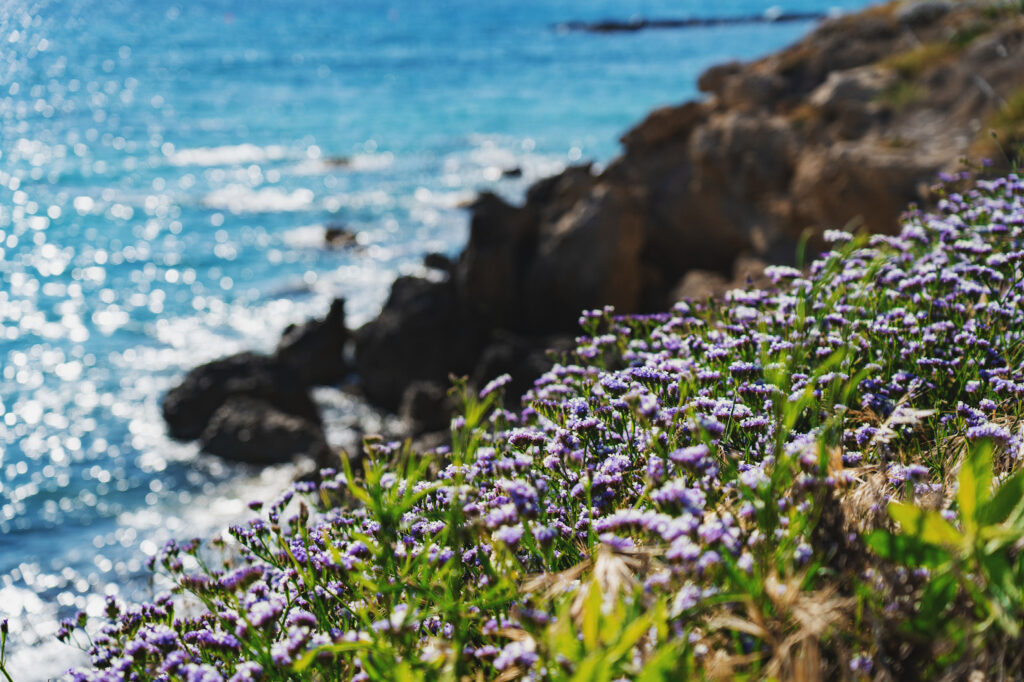
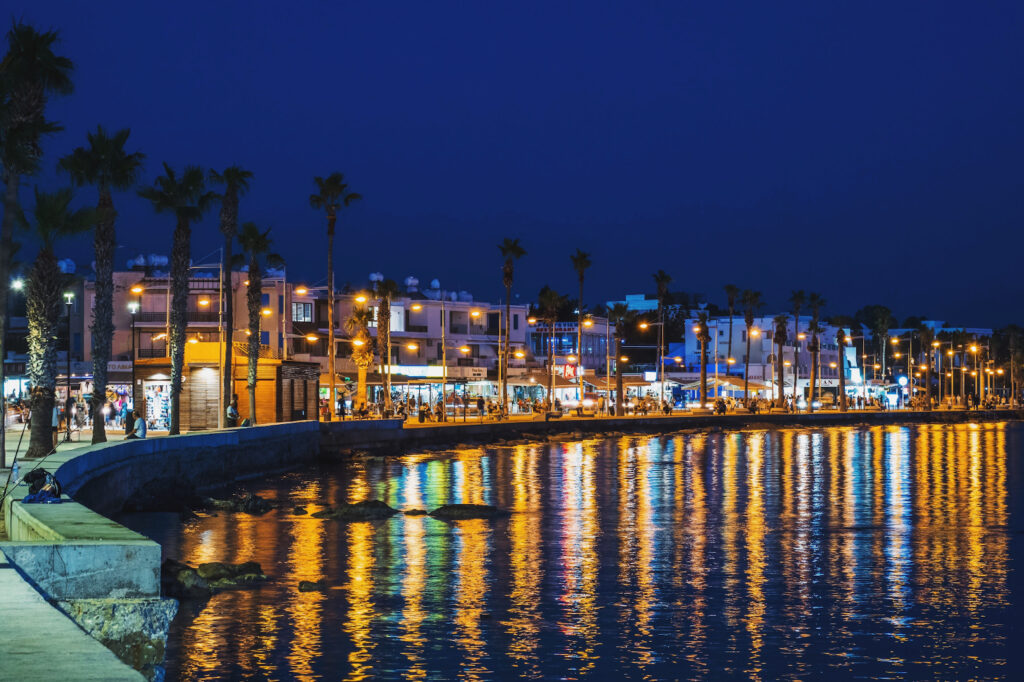
Getting Around Paphos
The best way to get around Paphos city is by walking around the sights, restaurants, hotels, and beaches in the harbour area. Walking in the Old Town up the hill is the only way to access everything because most of the streets have been pedestrianised. This way you do not miss very much either. If you get a chance, take a look at the Kiniras Hotel, which is something out of colonial Cyprus.
For the rest of the district outside of the city, the best suggestion is to rent a car. Get something with high clearance if you plan on travelling the back roads. You might even want a four-wheel-drive vehicle.
Outside The District
For a day trip just beyond the city, head for the town of Latchi on the north coast (a 45-minute trip), where you can get on one of the tour boats for the Blue Lagoon. The boat parallels the coast for an hour to a secluded cove, where the water is perfectly clear and warm and the mountains rise up magnificently from the shore. Enjoy swimming from the boat, sunning on the beach, or dozing on the boat. Most boats serve a nice lunch with some doing a Cypriot barbecue. After returning to Latchi, on the drive back to Paphos, stop at the Aphrodite Micro Brewery for craft beer or cider and the best pizza in the district.
Most people will head for Coral Bay for a day at the beach, but those in the know will head a few kilometres further along to Lara Beach, also known as Turtle Bay. This lovely sandy beach is home to the endangered green and leatherback turtles. Every summer they lay their eggs in the warm sand, and a few weeks later the baby turtles crawl back to the sea. Local conservation groups look after the nests and inform tourists about the turtles.
Looking for a great view? Just off the pretty city hall square in Old Town, the Muse Cafe offers an excellent place to enjoy a drink and watch the sunset over the lower town and the Mediterranean.
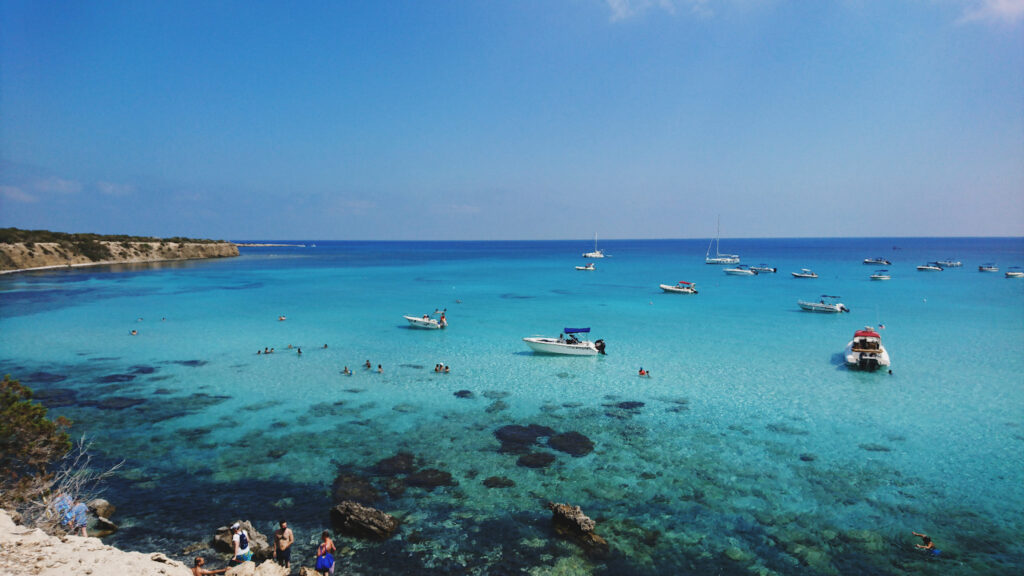
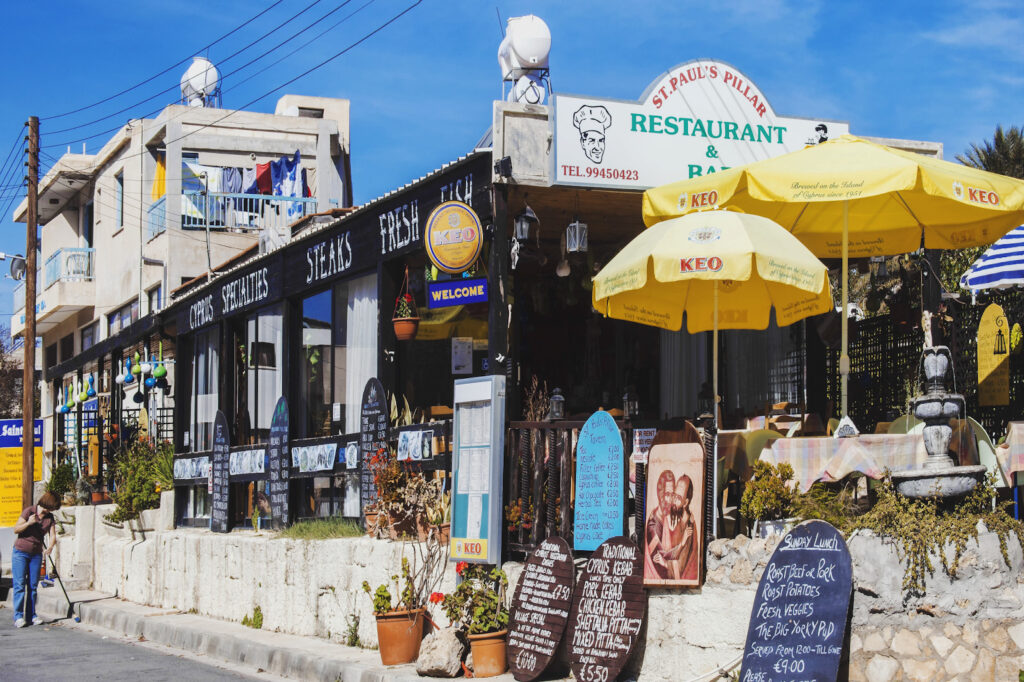
Connecting with Locals
When I want to have fun and celebrate being out in my city, I head for Bar Street at the harbour where all the restaurants, bars, and nightclubs are located. The city is safe with a low crime rate. I never feel worried being out at night.
To hang out with my friends and go to a real insider spot, I go to Craft Cafe Bar where I can relax and enjoy socialising. It’s down a little back street near the bus station. The atmosphere is great, the staff friendly, and the music cool.
The best resource for finding out what’s going on around town is the Paphos Facebook Page.
When I want to enjoy my city without spending much (or any) money, I walk around the harbour. Here I can watch the boats, feel the sea breeze on my face, poke around the stores, eat street food, enjoy a real Cyprus coffee, visit ancient sites, and jump into the sea to cool off.
Bar Street in the harbour is my first choice for music because there is always live music playing somewhere along the street. And when I feel like dancing, I go to Absolute-168 Nightclub in Coral Bay for the great music and easy access to the Coral Bay Strip.
Finding Solitude in Paphos
When I want to go somewhere to sit and meditate, I go to the area known as the White Cliffs, just north of the Peyia Sea Caves. I can hike down to the little coves at the cliff base by the sea and enjoy the water or the sunset. It’s never crowded and so peaceful.
If I chose the one place that makes me most proud of my city, it would be the Paphos Archaeological Park by the harbour. They have done a marvellous job of preserving and presenting the ancient ruins and history of this corner of the world.
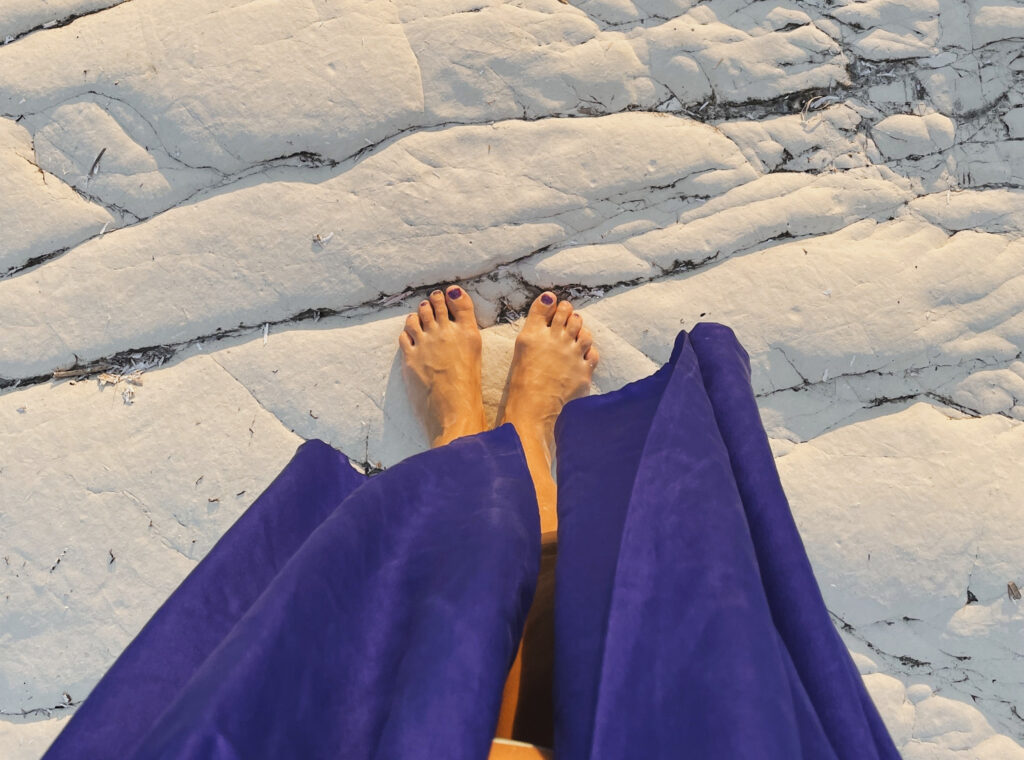
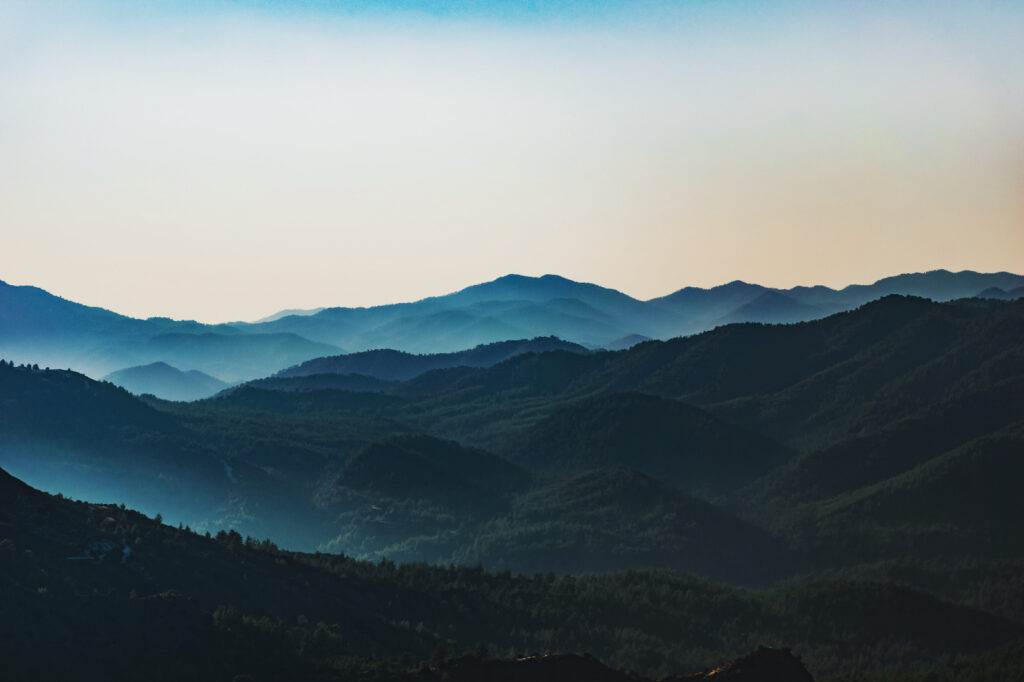
When the Seasons Change, This Area Shines
Spring (March-May) is the best time to go walking through the hills and valleys of the district. The winter rains have stopped and everything turns green. Wildflowers are everywhere and the orchards are blooming at their brightest.
The best time to enjoy the beach, patio parties, and the laidback Cyprus lifestyle is in the summer (June-August). I love going up to the Troodos mounts, where visitors and locals have sought relief from the heat for centuries. King Farouk of Egypt invented the brandy sour cocktail here in the 1920s.
The fall (September-November) is the time for enjoying the festival season. There is everything on offer, from the wine and beer festivals to international opera. The days are a little cooler but the sea is still warm. The harvest is in and fresh produce is available everywhere. Walking in the hills is comfortable, and exploring the villages is appealing.
The winter (December-February) is a great time to go back to the mountains and try skiing. Mount Olympus has a few ski runs, which normally get a fair amount of snow because the winter is the rainy season. Cyprus gets more than 320 sunny days per year, so the rainy season is not that bad.

